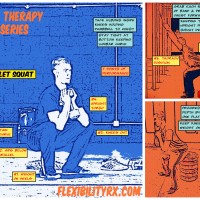
Squat Therapy Series
“The squat is no more an invention of a coach or trainer than is the hiccup or sneeze. It is a vital, natural, functional, component of your being.” – Greg Glassman
There are three main types of corrective squats that can be used to improve squat form – the wall squat, the box squat, and the goblet squat. A well-executed squat demonstrates all of the following points of performance:
Seven Points of Performance
#1: Weight on Heels
#2: Hips Bellow Parallel
#3: Knees-Out
#4: Upright Torso
#5: Lumbar Curve
#6: Thoracic Position
#7: Arms Overhead
Wall squats help athletes eliminate excessive forward lean and maintain a more upright torso. Box squats help athletes squat deeper and control the bottom position of the squat. Goblet squats improve every point of performance – enhancing both stability and motor control.
Motor Control Assessment
One of the first assessments athletes should use for the squat is a motor control assessment. If holding a weight in front improves form (and flexibility) then the problem is core stability and motor control – not flexibility. This is important because flexibility should always be the first corrective emphasis – before training stability, and then strength.
The motor control assessment helps determine if the issue is really a flexibility issue – not a stability or motor control issue.
3 Squat Therapy Exercises
Goblet Squat
The goblet squat improves all seven points of performance. Poor abdominal function places a demand on the deep hip flexor (psoas) to stabilize the spine. This hip-flexor tension can prevent an upright torso. Holding a weight out in front often ‘unloads’ the spine by activating the abdominals and releasing the hip-flexor’s hold on the spine. The counterweight helps athletes sit back into their heels, squat deeper, and keep their knees-out. The goblet squat should be a fundamental training exercise for athletes of all levels.
Band Squat (Wall Squat Variation)
A wall squat involves facing the wall with your arms elevated and slowly descending until the hips break parallel. This type of squat focuses on trying to keep the torso upright and prevent excessive forward lean. The advantage of the band squat is that athletes with poor thoracic extension and shoulder flexibility can modify the angle of the torso and arms. The band also provides assistance to control the descent as the hips lower. This allows an athlete to focus on keeping an upright torso and use the band as an aid to improve squat depth.
Box Squat
Box squats help athletes that have a hard time sitting back into their heels. While the squat is a different movement pattern than the hip-hinge – the squat also requires a posterior weight shift of the hips. Adjusting the height of the box allows an athlete to focus on the back and down aspect of the squat.
The box squat as a corrective exercise is different from the type of box squat used in powerlifting – which involves a wider stance and a focus on driving out of the bottom of the lift.
The corrective exercise uses the box as both a target to provide feedback and to provide an object to fall back on as needed. The box allows an athlete to progress their depth inch by inch as they develop motor control at the bottom. The focus here (unlike the powerlifting variation) is the eccentric portion of the movement (slow controlled descent).
Box squats are great for pistol squats and can be used in combination with goblet squats (or plate loaded front squat).
A Comprehensive Breakdown of the Squat – SquatRx Guide Free Download
The seven points of performance listed above provide a comprehensive framework for improving the squat. The squat is a complex movement pattern that requires a balance of flexibility, stability, and motor control for movement competency – before strength capacity can be trained. My SquatRx guide includes detailed assessments and essential exercises for improving flexibility, stability, and motor control.
You can download my FREE 26 page SquatRx guide here.
– Kevin Kula, “The Flexibility Coach” – Creator of FlexibilityRx™
Related Resources
CrossFit Journal: Squat Clinic by Greg Glassman (link)
Dan John (T NATION) Goblet Squats 101 (link)
Bret Contreras: A Set of Goblet Squats per Day Keeps the Doctor Away (link)
Breaking Muscle: Squat Therapy – 4 Drills to Improve Your Squat (link)
Breaking Muscle: Squats & Hip Dysfunction: 2 Problems and How to Fix Them (link)
Tags: box squat, butt-wink squat, goblet squat, knees out squat, squat clinic, squat depth, squat therapy, squat therapy drills, upright torso squat, wall squat
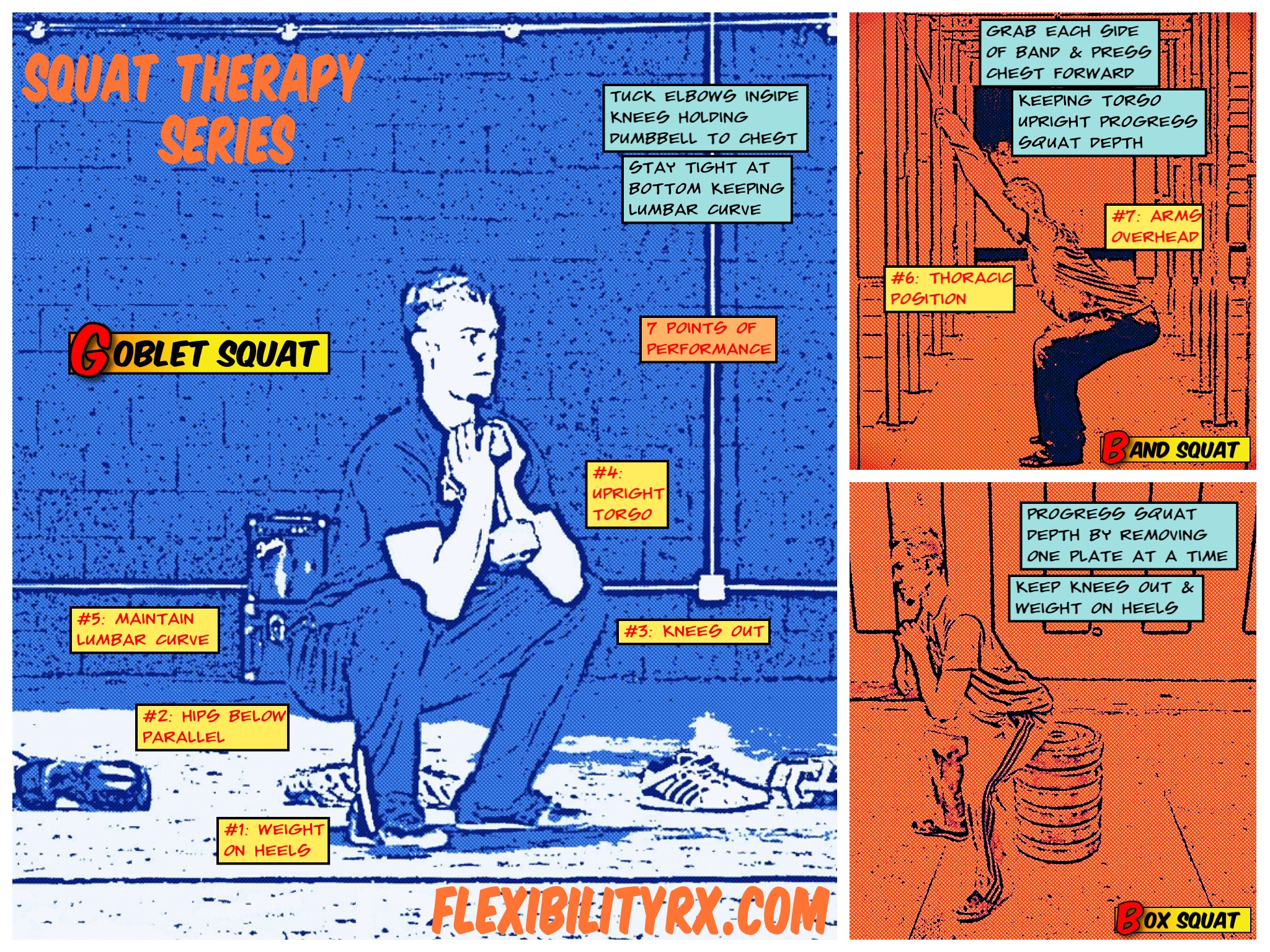
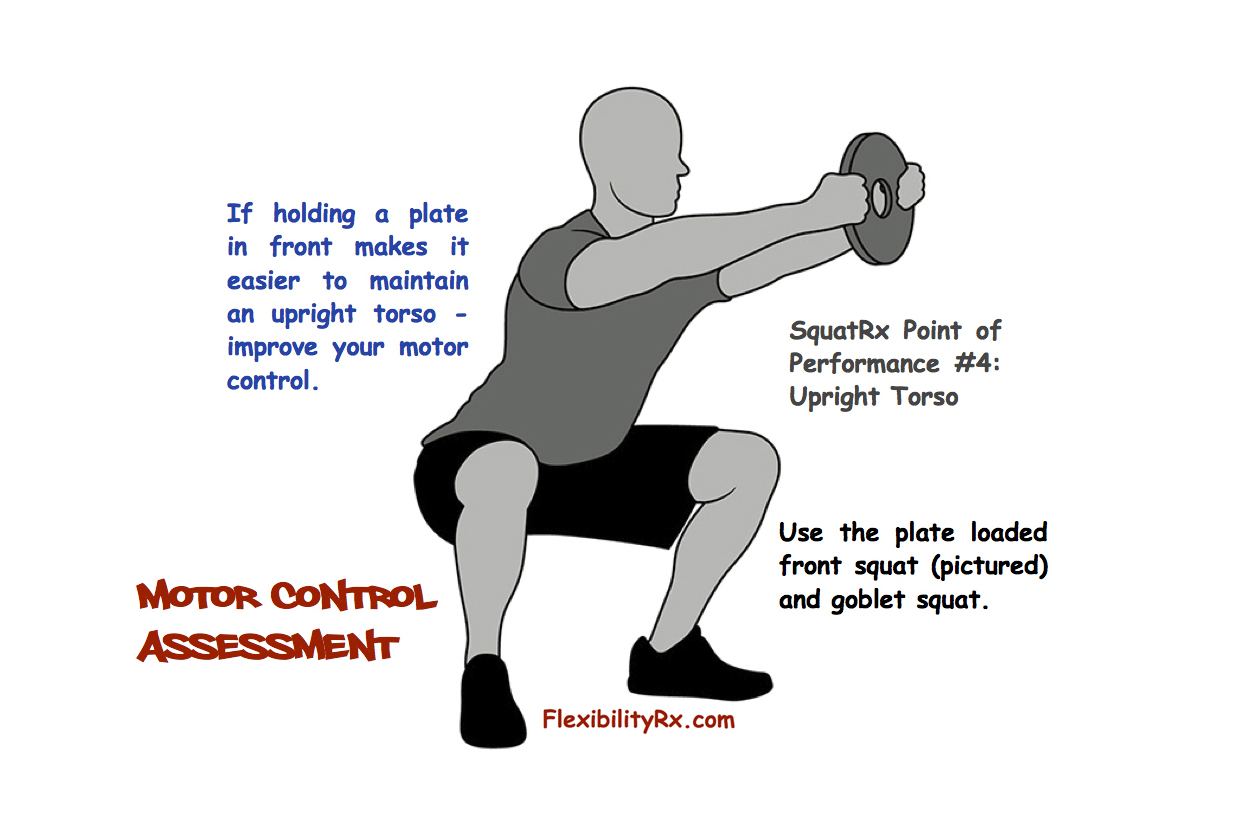
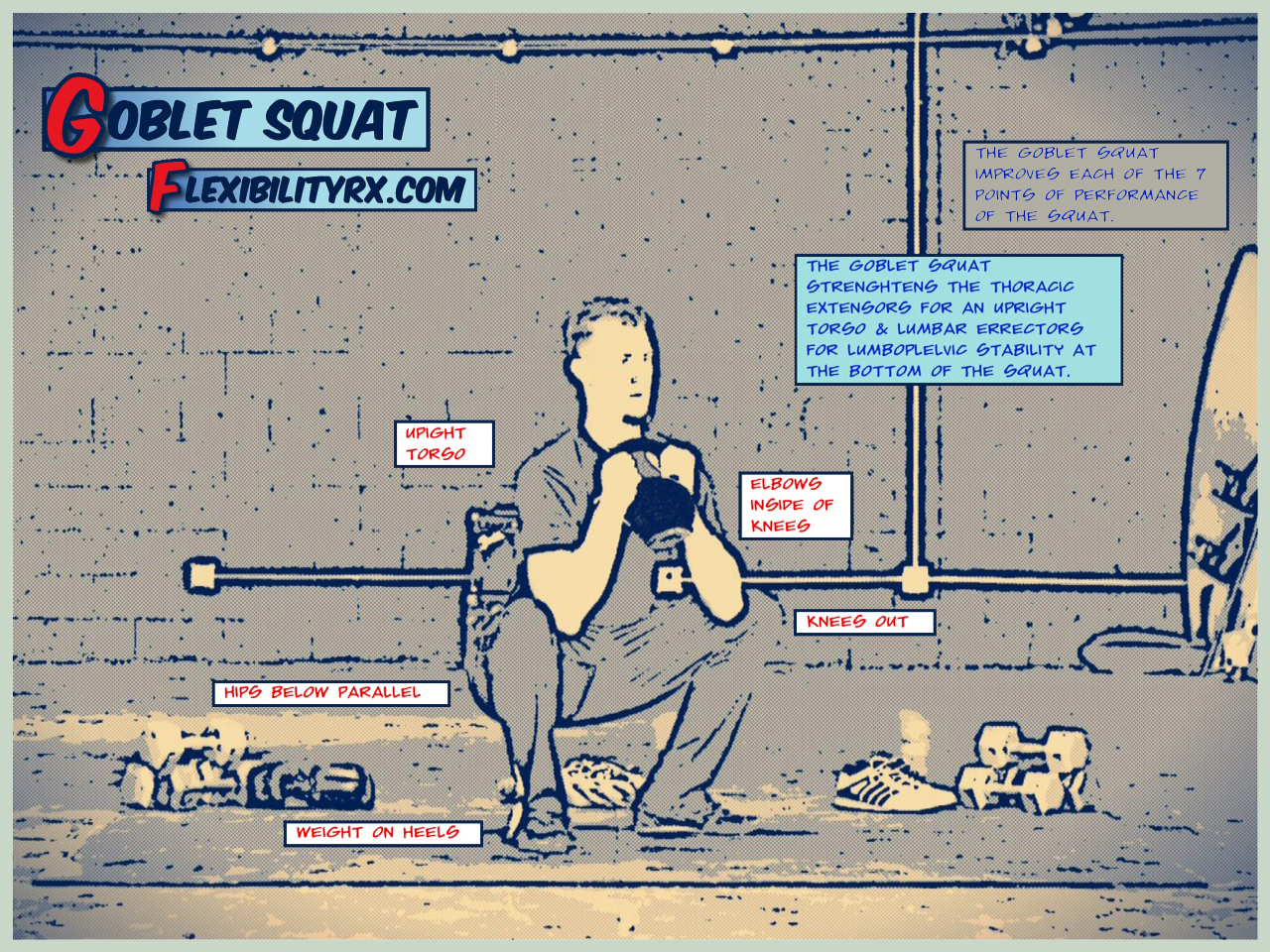
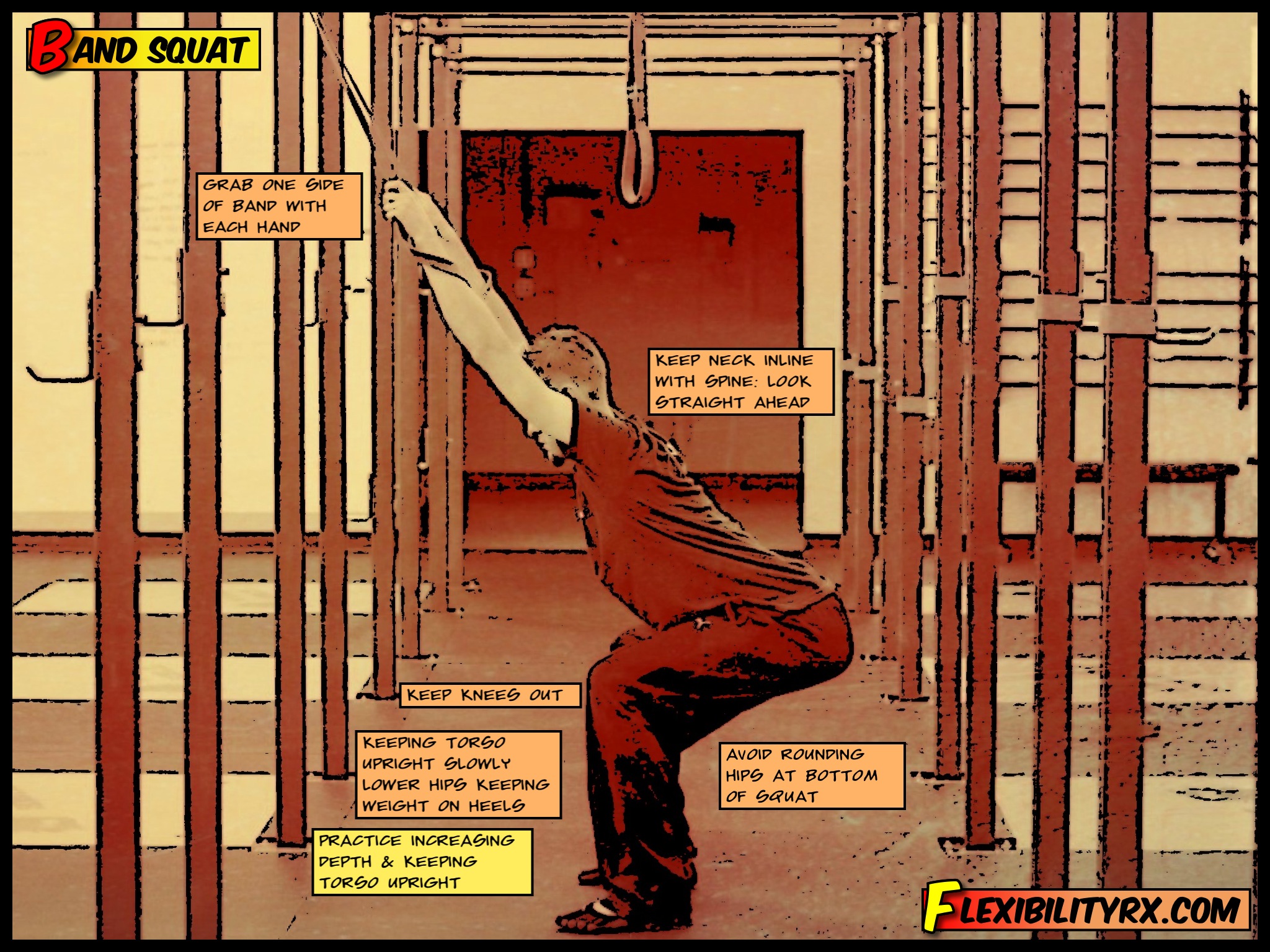
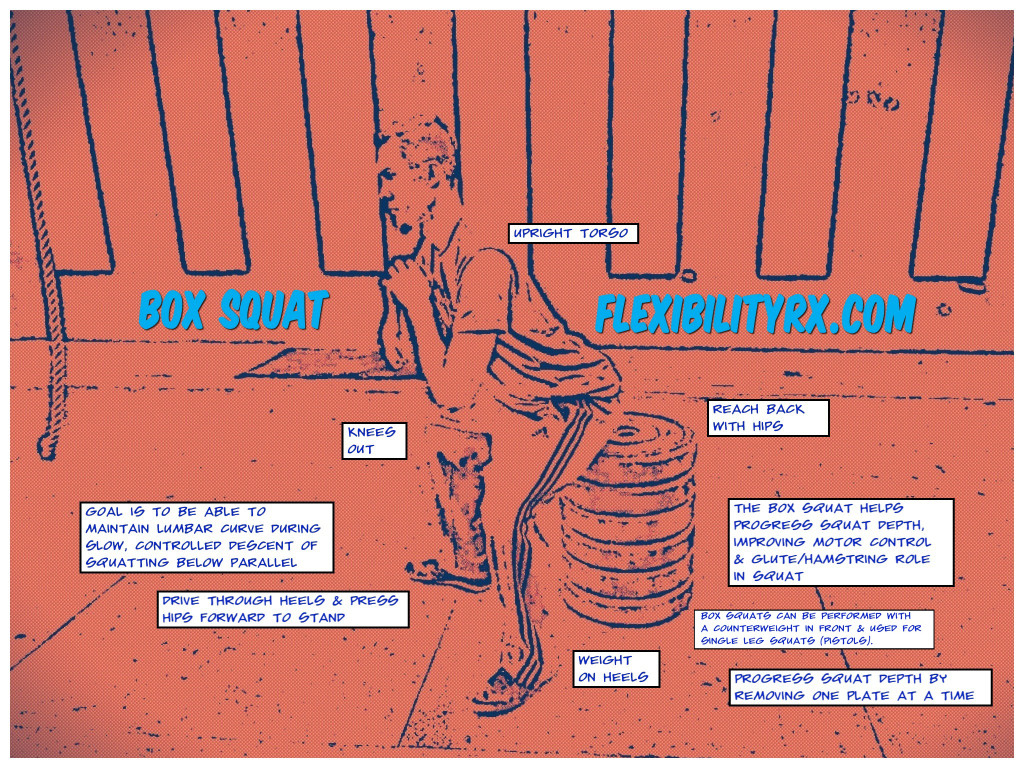
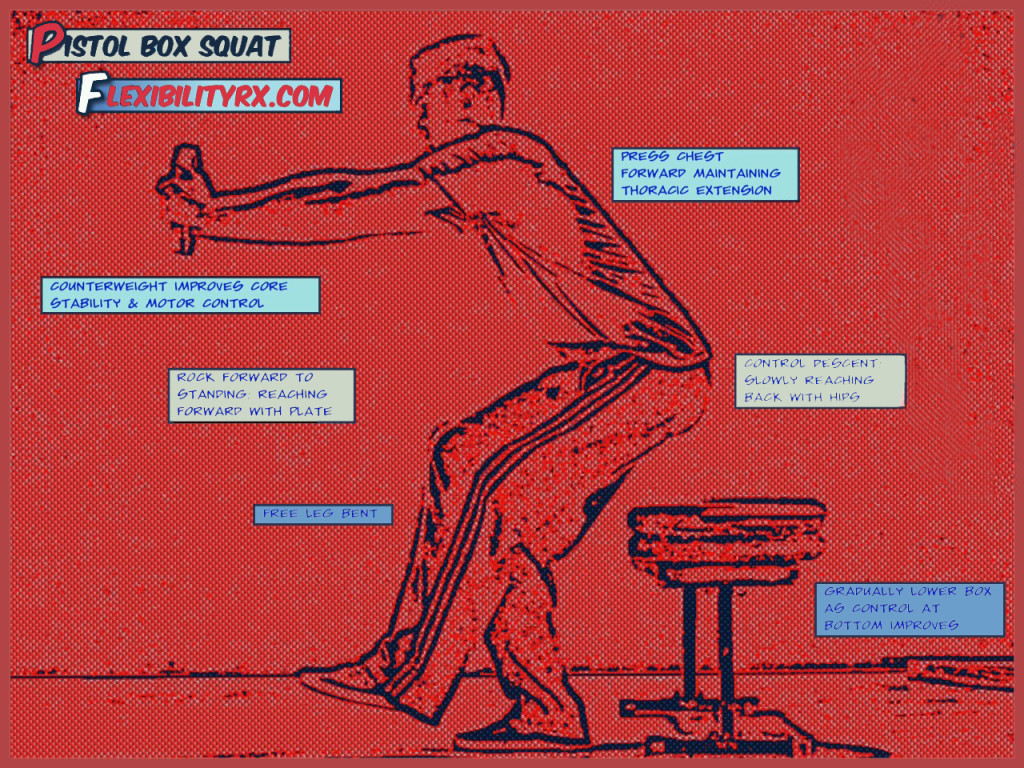
Leave A Reply (No comments so far)
You must be logged in to post a comment.
No comments yet